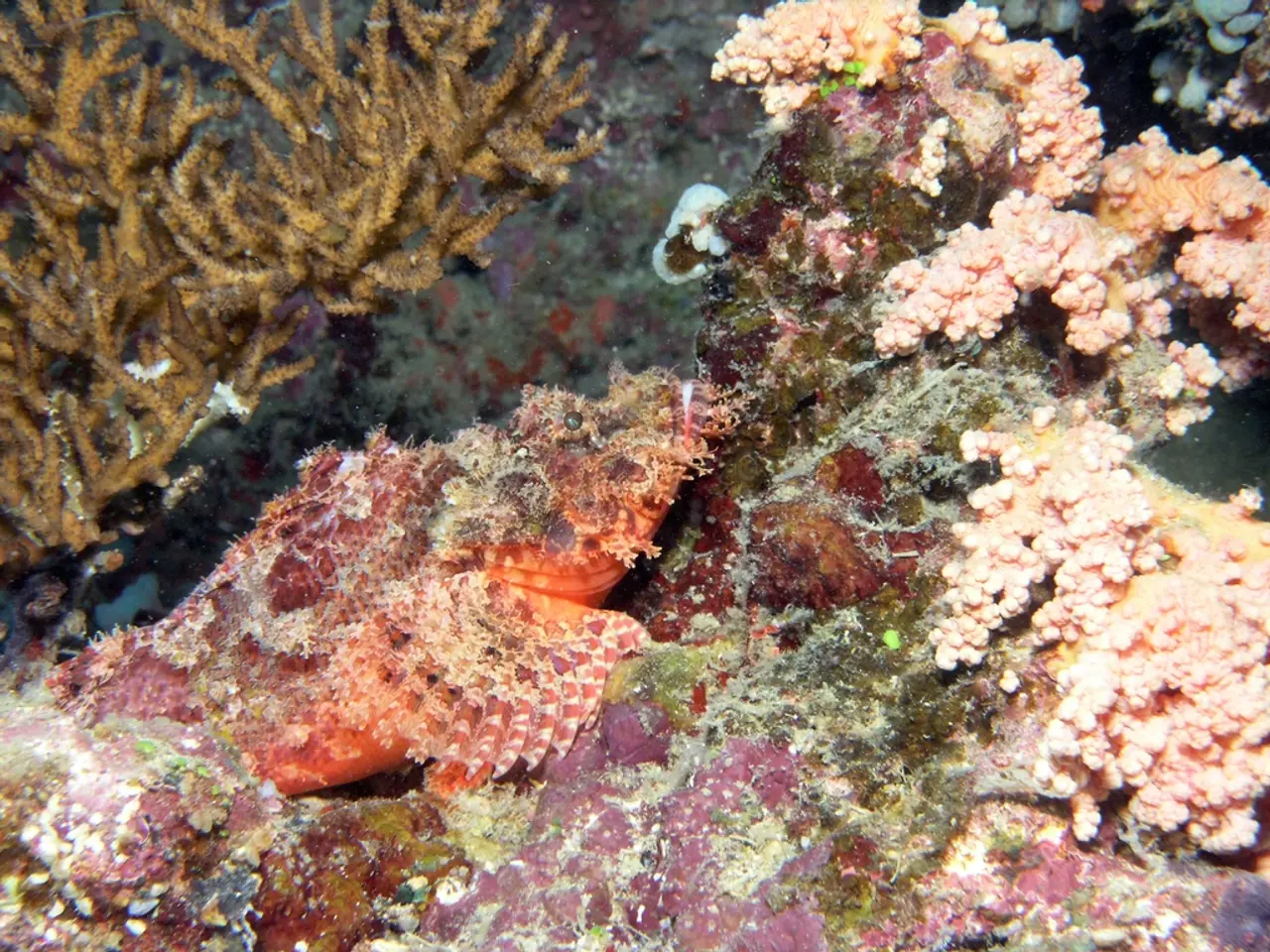Plan for combating intrusive marine algae
Portugal Launches National Strategy to Combat Invasive Asian Algae
The Portuguese government has announced a new National Strategy for Managing Rugulopteryx okamurae, an invasive Asian algae species that has been rapidly spreading along the Portuguese coast. The strategy, which focuses on monitoring, removal, and biodiversity protection, aims to mitigate the ecological, social, and economic impacts of the algae.
The key participants in this effort are the Portuguese Ministry of Environment and Energy and the Ministry of Agriculture and Sea, who issued a joint statement announcing the strategy's approval and will presumably coordinate its execution.
The action plan outlined in the joint ordinance includes monitoring measures, operational response, biomass valorisation, scientific research, and institutional coordination. Mobilization of regional rapid response teams is part of the planned measures, and a national database with georeferenced records of the species' evolution is to be created.
Concrete solutions for the territory and the sustainable valorisation of the algae biomass are at the heart of the strategy. The planned measures include the removal of the algae from critical areas, and the study of the algae's valorisation for industrial or agricultural purposes is part of the planned measures.
Fishing communities, local economic agents, and the city councils of the most affected municipalities are to be engaged from the outset. The Portuguese Environment Agency will coordinate the interinstitutional working group, which includes scientific, municipal, and maritime sector entities.
The rapid proliferation of the algae requires a coordinated action across all levels of governance and sectors involved. An interinstitutional working group will be formed to develop the strategy. The Minister of Agriculture and the Sea, José Manuel Fernandes, has emphasized the need for a rapid, determined, and technically sustained response to the phenomenon.
Similar regional plans in nearby regions like Andalusia, Spain, emphasize scientific research, environmental protection, and institutional coordination as critical elements. These plans offer a potential model or collaboration opportunity for Portugal.
No specific details were found about public awareness campaigns or community involvement in Portugal, though similar initiatives (like replanting native species and educational workshops) are occurring in nearby regions and could be relevant for Portugal's strategy.
In summary, the National Strategy for Managing Rugulopteryx okamurae is a comprehensive plan aimed at managing the invasive Asian algae species along the Portuguese coast. The strategy involves the Portuguese Ministry of Environment and Energy and the Ministry of Agriculture and Sea, scientific, municipal, and maritime sector entities, and focuses on ensuring the sustainable valorisation of the algae biomass while mitigating biodiversity loss.
- Despite the focus on science for combating the invasive Asian algae, there seems to be an opportunity to expand the strategy to include health-and-wellness, as initiatives like replanting native species and educational workshops in nearby regions have shown positive impacts.
- The Portuguese climate, known for its mild winters and hot summers, could potentially provide unique conditions for environmental-science research into the effects of climate-change on the invasive Asian algae, Rugulopteryx okamurae.
- With the increasing popularity of tourism in the Algarve region, it would be wise to consider health-and-wellness programs that emphasize environmental conservation and promote the use of locally-sourced algae biomass from responsible harvesting in tourism businesses, enhancing the sustainability of the tourism sector.




